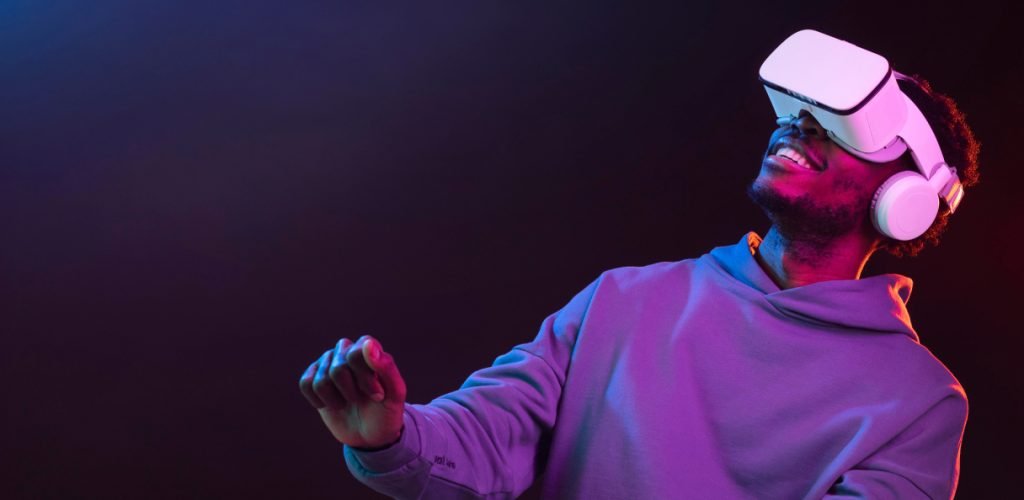Are you ready for the Metaverse? It is a virtual universe where people interact with each other and digital objects in real time. It is a world where anything is possible, from playing games to attending virtual events. However, as the Metaverse gains more popularity, it is important to understand the critical role UX design plays in shaping the user experience. That’s right – great UX design can create a seamless and engaging experience for users, while a poor one can lead to frustration and confusion. In fact, a recent report suggests the Metaverse market is expected to reach US $800 billion by the year 2028, indicating the massive potential for businesses in this space. In this blog, we are going to explore why UX design is critical for the success of the Metaverse, and what it means for businesses and users alike.
So, get ready to dive into the exciting world of the Metaverse and learn how UX design can help you stay ahead of the competition.
Overview of UX design in the Metaverse
In the Metaverse, UX design involves creating immersive experiences for users in a virtual environment. It centers around creating digital environments that are as natural and intuitive as the real world. The goal is to create a user experience that is engaging and seamless, encouraging users to spend more time in the Metaverse. This includes creating user interfaces, avatars, and even virtual environments.
Traditional UX design Vs Metaverse UX design
Let’s talk about Metaverse UX design – the art of crafting digital experiences that transport users to a whole new world. But here is the thing, designing for the Metaverse requires a whole new set of skills compared to traditional UX design. Here are some of the key differences that set Metaverse UX design apart:
First up, dimensionality. The Metaverse is a three-dimensional space, which means designers must account for height, depth, and width when creating virtual environments. It is not just about how things look but also about how they feel and how users can move around them.
Next, physicality. In the Metaverse, users do not just interact with a screen – they physically interact with digital objects. That means designers need to think about how those objects will behave and how users will interact with them. It is a whole new level of immersion that traditional UX design just can’t match.
In terms of immersion, users typically interact in the Metaverse through avatars, which are digital representations of themselves. As a result, UX design must take into account avatar customization and movement, which can influence how users feel in the virtual world. It all comes down to creating a personalized and engaging experience.
Finally, spatial considerations. In the Metaverse, designers must think about how sound and camera angles will impact user experience. It is not only what users see on the screen, but also what they hear and how they feel as they move through the virtual environment.
How the Metaverse is Changing the Design Industry
Metaverse is shaking up the design industry like never before. This digital phenomenon is changing the game in more ways than one, and designers are at the forefront of this revolution. Here are just a few of the ways the Metaverse is changing the design industry:
First and foremost, new design challenges. Metaverse design is not for the faint of heart. It demands a completely new set of skills and approaches to the user experience that account for the spatial nature of virtual environments. Designers need to think beyond the traditional 2D screen and consider the three-dimensional space that users will be navigating.
However, new challenges bring new opportunities. Designers have a whole new canvas to work with in the Metaverse, from creating immersive experiences that transport users to new worlds to creating new roles in the industry. Designers are only scratching the surface of what is possible, and the possibilities are limitless.
Speaking of new roles, the Metaverse is creating a whole new job market for designers. As the Metaverse expands, new opportunities for designers specializing in Metaverse experience design and virtual world architecture emerge. It is a whole new frontier, and the opportunities are ripe for those who are ready to jump in.
Success Stories
The Metaverse is still a young concept, but there are already plenty of examples of successful Metaverse UX design. Let us take a closer look at a few of them:
1. Roblox
This virtual world allows users to create and explore their own 3D worlds, and its Metaverse UX design is a great example of how to create an engaging and accessible experience for a wide range of users. From intuitive controls to stunning visuals, Roblox has nailed it.
2. VRChat
This social VR platform focuses on connecting users in virtual spaces, and its Metaverse UX design encourages users to explore and interact with others in the virtual world. It is a great example of how Metaverse UX design can foster community and connection.
3. Minecraft
While not strictly a Metaverse platform, Minecraft has long been a pioneer in spatial and interactive design. Its UX design is a great example of how to create engaging experiences that keep users coming back for more.
The Future of Metaverse UX design
The Metaverse is more than just a digital world; it is a new frontier for UX design. The future of Metaverse UX design has important implications for both businesses and individuals alike. Here are some of the ways the Metaverse is changing the game:
For businesses, the Metaverse represents a world of new opportunities. Brands that can create engaging and innovative experiences within this virtual world will have a distinct advantage over their competitors. Imagine virtual product demos, immersive brand experiences, and virtual events that bring people together from all over the world.
Second, the Metaverse’s rise is opening up new career opportunities in UX design and virtual event planning. As businesses and individuals alike seek to create unique and engaging digital experiences, there will be a growing demand for skilled professionals who can assist in making these visions a reality.
Lastly, the Metaverse has the potential to create new ways for individuals to connect with each other and with brands. Virtual social events, immersive experiences, and even virtual tourism could become the norm in the Metaverse.
To summarise, the Metaverse is here to stay, and UX designers who can adapt to this new environment will be well-positioned to thrive in the years ahead. By keeping these key principles in mind and staying up-to-date with the latest developments in the field, designers can create experiences that are truly groundbreaking and help shape the future of digital experiences for years to come.





